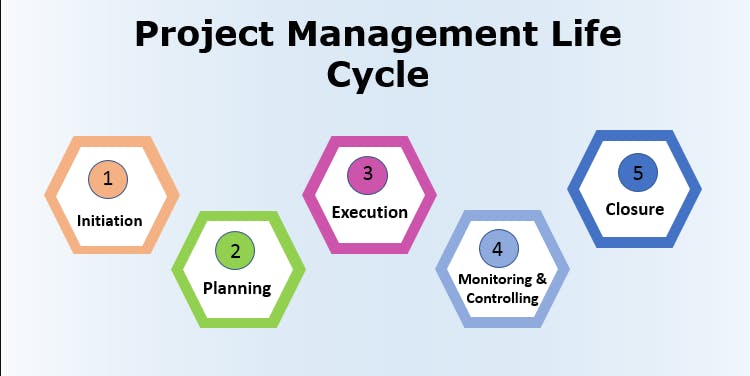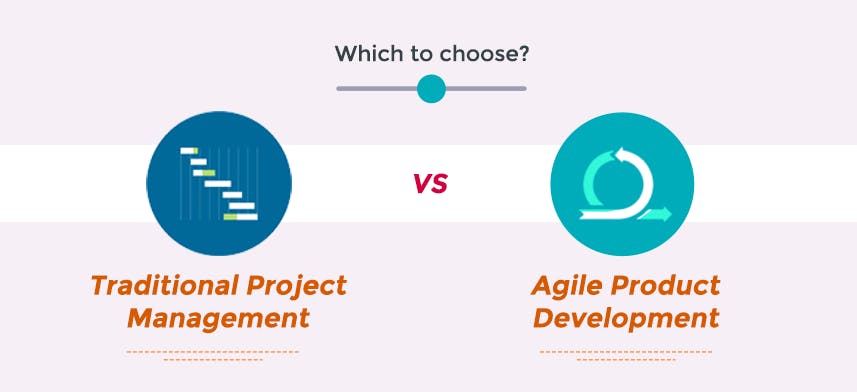What is a Project?
How do projects get started? When someone has a problem to solve or an opportunity to pursue.
Delivering a project successfully is more than writing up and handing out to-do lists. Project management is an ongoing balancing act between project scope and the time, resources, and budget you've been given. To make things more interesting, most of the time work never goes according to plan. So you have to continually correct course pretty much until the project is done. To make sure we are on the same page about what a project is, here's a formal definition:
A project is a temporary endeavor that has a specific and unique goal, and usually a budget. Unlike day to day operations, a project has a definite beginning and end. If a project is building a website for a client, the project is done when you successfully hand it over to the client.
What is Project Management?
Project management is more than showing off your organizational skills and supervising others. It means applying knowledge, skills, tools and techniques to achieve your project's objectives. Project management can be summed up by answering a few crucial questions:
- What problem are you solving?
Clearly defining what the project is supposed to accomplish is a big step toward making it a success.
"You've got to be very careful if you don't know where you're going because you might not get there." Yogi Berra
- How are you going to solve this problem?
Whether you are solving a problem or pursuing an opportunity, you might have to choose from several possible strategies. Once you've picked your approach, its time to flesh out your solution, gathering requirements, identifying deliverables and defining project scope.
- What's your plan?
A big part of project management is planning your project. You have to identify the work to be done, in detail. How long it might take, the resources you need and how much they cost. With that info in hand, you can build a schedule of when work should occur. You might also want to spell out how you want things to happen in your project like communication, managing changes and so on.
- How will you know when you're done?
Some projects seem to be going on forever, but eventually, someone will pull the plug if it doesn't finish. Having clearly defined objectives, requirements and deliverables help answer this question.
- How well did the project go?
Finally, towards the end of a project, one has to ask themselves, how well did the project go? What worked well, what didn't and why? How could we have done better?
What it Takes to be a Project Manager
 Most people see project managers as really organized and good at getting things done. But project managers also use a wide variety of skills and knowledge to complete projects successfully.
Most people see project managers as really organized and good at getting things done. But project managers also use a wide variety of skills and knowledge to complete projects successfully.
Technical skills specific to project management like what goes into a project plan, building and fine tuning a project schedule, reading a Gant chart, using a critical path and measuring performance.
Business expertise. Its up to you to make sure your project delivers value. You need to understand your organization's business, what it does and what it considers important. That way, you can see how your projects fits in and you can make good decisions to ensure that your project is successful.
Problem-solving. In most cases, projects never go according to plan. Your job is to figure out how to achieve project objectives and meet the schedule and budget while working around the problems that arise.
Interpersonal skills. Projects may use people from different groups, departments and even different companies. As a leader of this group, its your job to help everyone work as a team to get the project done, and done well.
Strong leadership. As a project manager, you want to inspire your people, help them become a true team, guide them to do the right things, hold them accountable, and motivate them to give their best.
The Project Management Life Cycle
 Project management can be categorized into five groups of processes that help guide a project successfully from beginning to end. Here are project management's five process groups according to the Project Management Institute.
Project management can be categorized into five groups of processes that help guide a project successfully from beginning to end. Here are project management's five process groups according to the Project Management Institute.
1. Initiating
Initiating is all about getting the commitment to start a project. To get that commitment, you start by:
- Defining the project. What is the project supposed to accomplish
- What's the scope?
- Determine the resources needed and the cost
- Identify the project stakeholders and make sure they agree on what the project is.
- Ask for approval to proceed
2. Planning
Here is where you figure out how you are going to perform the project. Planning seeks to answer the questions:
- What are we going to do?
- How are we going to do it?
- How will we know when we're done? When the plan is complete, it's time to get approval to launch the project.
3. Executing
This starts by launching a project. You bring your resources on board, get them settled in, and explain the rules you're using to run the project. After that, everyone jumps in to put the plan into action😊.
4. Monitoring and Controlling
This means checking what's going on in the project and how that compares to what was planned. If the project is sliding off track, you take action to get it back on course.
5. Closure
The closing process is short but important. It involves getting the client to officially accept that the project is complete. You document the project performance, gather lessons learned, close contracts and help resources move on to their next assignment.
Traditional vs. Agile Project Management

When each project management process group occurs one after another, it's known as traditional project management, or the waterfall approach, because the processes flow from one to the next.
Traditional project management works well when the project goal and solution are clearly defined, and the scope and deliverables are clear-cut. The more you know about a project, the better the waterfall approach works. Simple projects with very little uncertainty are great candidates for this approach because you know what needs to be done and how to handle issues that arise.
With many projects today, you don't know what the solution looks like, so you have to figure it out as you go. This type of project requires a different approach. Agile project management goes through iterations, sometimes called sprints, to deliver partial, yet production-quality solutions at regular intervals. With this approach, the customer gets value from the project sooner. In addition, the customer's feedback on what's been delivered so far can help improve the overall solution. The customer has to be more involved than in traditional projects.
During initiating and planning, you define the overall goal for the project and build a plan to achieve that goal. With agile project management, you then develop detailed plans for each iteration. Executing is easier because you work on one iteration at a time and small independent teams of highly-skilled people to get the work done.
Another characteristic of agile projects is that you monitor and control them more closely, and teams tend to communicate faster and more frequently. Finally, each iteration has its own closing process for accepting its specific deliverables. When the final iteration is accepted, you can close the entire project.
How Organizational Structure Affects Projects
 Organizations can be structured in several ways. From the classic functional hierarchy where each person reports to only one supervisor, to a matrix, where people report to both functional managers and project managers, to a projectized organization, where most of the people work on projects. Each of these structures affects how projects are performed.
Organizations can be structured in several ways. From the classic functional hierarchy where each person reports to only one supervisor, to a matrix, where people report to both functional managers and project managers, to a projectized organization, where most of the people work on projects. Each of these structures affects how projects are performed.
In a functional hierarchy, projects aren't the priority, making it difficult for projects to succeed. Project managers have almost no authority. A functional manager is typically in charge of things like the project budget. Resources are hard to come-by because they report to functional managers, not the project manager.
Matrix organizations are still functional hierarchies but they support projects more than pure hierarchies do. Here, project managers have some authority to make decisions. Resources assigned to projects report to two managers, their functional manager and the project manager.
Projectized organizations are all about projects. This type of organizational structure makes it easier for project managers to produce results. Project managers have almost complete authority over their projects, including budgets. Resources are dedicated to project work and report to the project manager.
Organizational structure has a big influence on how projects are performed, how much a project manager can do and how easy it is to make projects successful.
How Organizational Culture Affects Projects
 Organizational culture is a set of factors that guide people's behaviours and decisions within an organization. Things like shared values, beliefs, assumptions, habits and language.
Organizational culture is a set of factors that guide people's behaviours and decisions within an organization. Things like shared values, beliefs, assumptions, habits and language.
The organization's mission and vision shape the organization's culture. Projects that support the company mission are likely to get more attention and resources.
Leadership and authority are also a big part of organizational culture. If the management defines clear goals and then delegates responsibilities to employees, that approach will also work in your projects. On the other hand, if authority isn't handed out often, you need to work with management to get things done and build their trust in you at the same time.
Work environment. With a positive environment, people are motivated to get things done. In a negative environment, you are going to spend a lot of time managing your team.
Culture has a strong influence on how things happen within projects, and how decisions are made. To increase your success, you need to manage your projects taking cultural factors into account.

